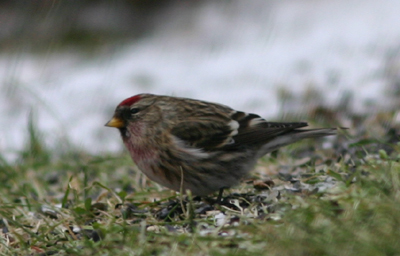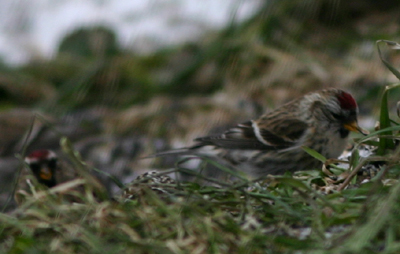For even the most conscientious and honest birder, a life list can host a litany of sins. Most of these are sins of omission, species that a beginning birder are too inexperienced to identify in the field without assistance. Few novices, for example, will be able to differentiate a mixed flock of shorebirds the first (or second or tenth) time out so the first Western Sandpiper a person sees probably won’t be the first one he ticks. Other more pernicious marks on a life list are those of overweening ambition or, more likely, involuntary ignorance. When you’re first getting started, every branch and thicket seems fraught with possibility; the entire field guide is your oyster, regardless of season or ecosystem. Of this, I’m as guilty as anyone. I was much quicker to call a Little Gull on the Long Island shore with only four months under my belt than I am now after more than four years of experience. Yet, it’s impossible in many instances to determine after the fact that such a sighting was erroneous so instead it lingers, tainting one’s life list with the odor of inexactitude.
Such is the tale of my first Common Redpoll.

Back when Sara and I first fell into this avocation, we took our annual summer excursion to Potter County, PA. Flush with some early birding successes along with a few beers, I felt invincible as long as I had my field guide. Yet, I probably didn’t grasp the concept of seasonal distrubution as depicted on range maps. Why else would I have felt so confident identifying a Common Redpoll in a pine tree in mid-July? I remember the circumstances as if it were yesterday, how I got other people on the bird, carefully explaining the field marks and comparing them to the photo in the guide. It wasn’t until years later that I had the sense to question how utterly improbable such a sighting is. Still, I couldn’t in good faith strike it from my list because of that slim shard of possibility. After all, if someone could capture a Pink-footed Goose and a Western Kingbird in the same scope view on Montauk, a person might spy a redpoll out of season in Pennslyvania.
Thankfully, I knew it was simply a matter oftime before I’d enjoy an indisputable encounter with this putative life bird. The current winter finch invasion proved an auspicious setting for such an incident. With almost perfect symmetry, my real redpoll sighting occurred quite close to the scence of the original crime, though at my mother-in-law’s rather than father-in-law’s home. On a merry Christmas afternoon, I observed a flock of twenty or so Common Redpolls forage at Ann’s feeders, those carnelian crowns reminiscent of the jolly caps of elves. No, I don’t believe in Santa anymore but the relief I feel at finding real redpolls is quite a gift!














Congrats! They are a neat little bird. Send some my way.
Well, these Common Redpolls are certainly indisputable! But did you try to turn any of them into Hoary Redpolls?
Congrats on the Redpolls and I had a similar situation with Cape May Warbler. After getting a year or two under my belt . . . I started wondering if that’s what I had really seen! Since I have seen them a few times now . . . I can honestly say that I didn’t find a breeding pair of Cape May Warblers! It is very had to admit our mistakes but it is needed from time to time to keep us straight!
Congrats on the “official” lifer redpolls, documentation is everything! I’m especially intrigued about your out-of-season redpolls: everyone knows that can’t happen . . . well, unless it does . . ..
🙂
Good birding,
Mike
Mike,
I think the Gods of birding must be conspiring to seduce me into becoming more of a birder than that of a bird feeder.
First Corey points out a lifer (the pine grosbeaks) and today my first redpolls. (two females) Hoping to see more. Sigh if only squirrels flew .